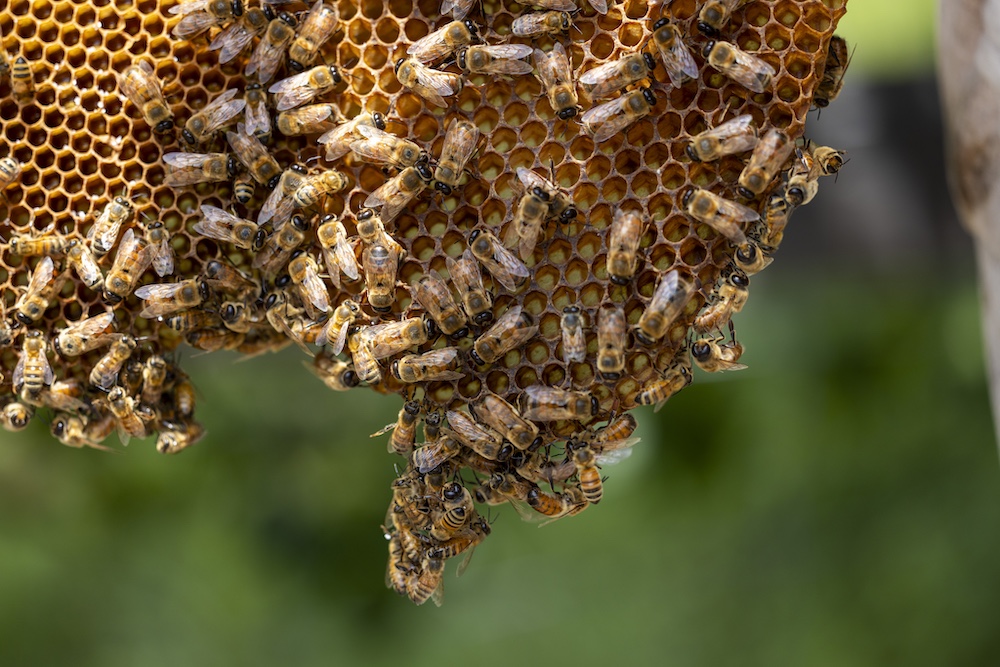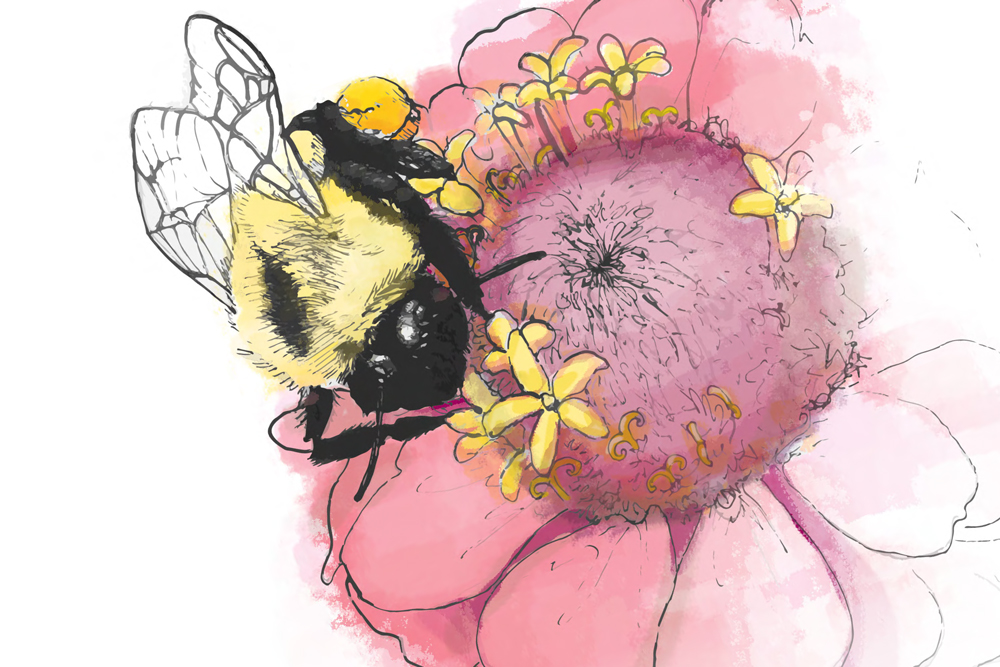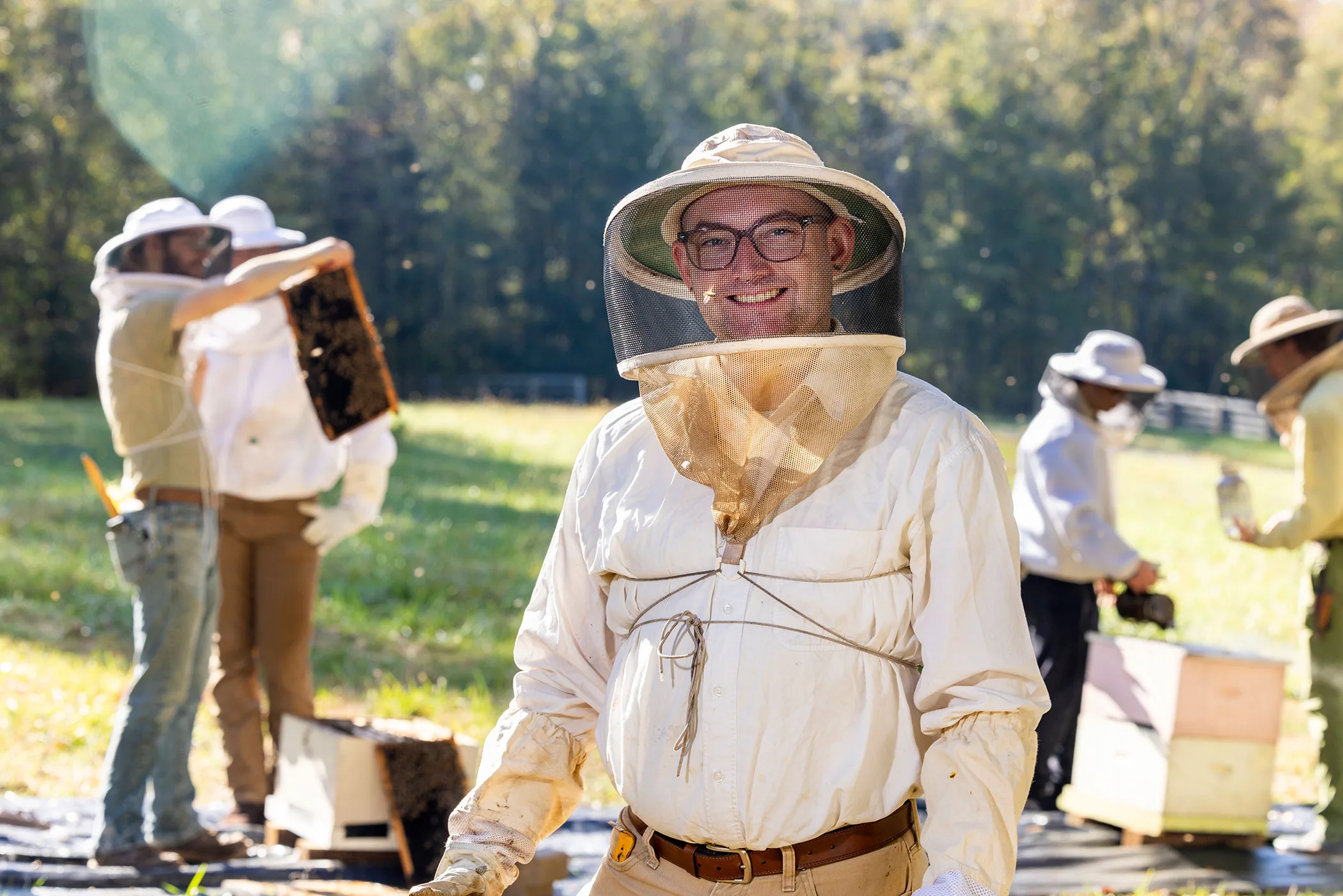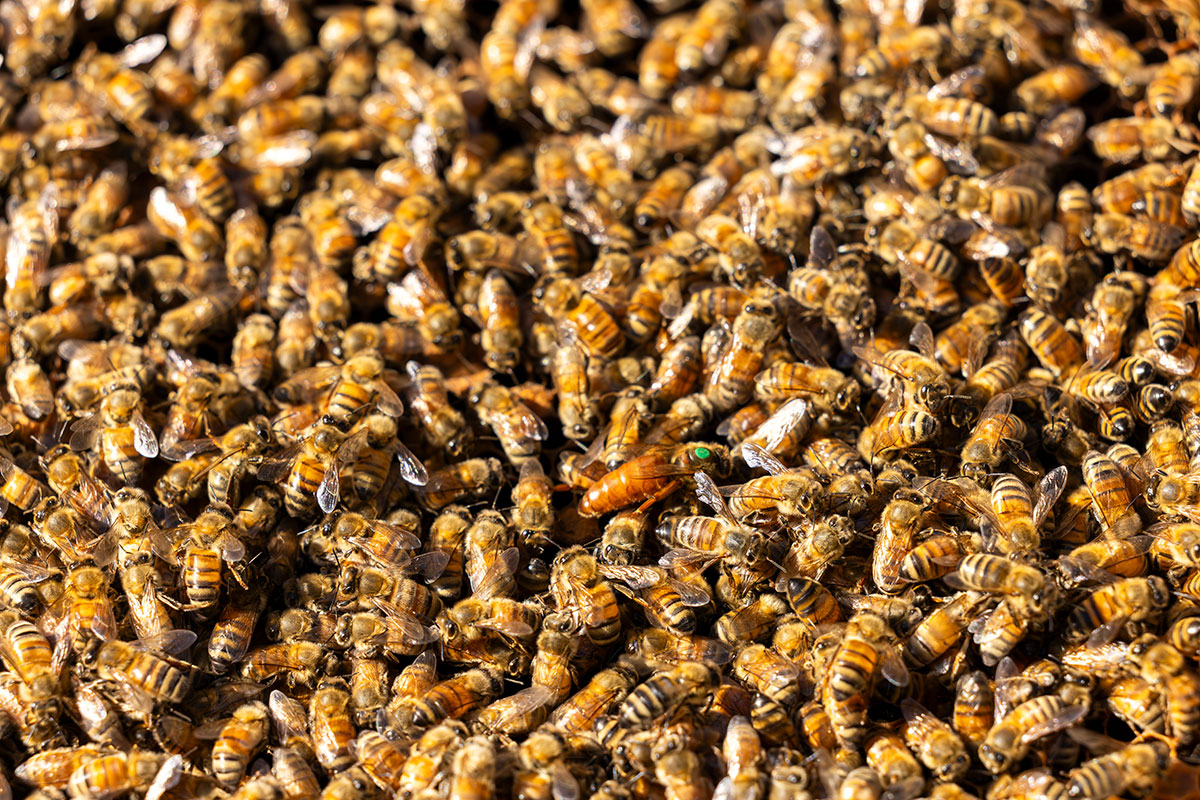
Takeaways
- Honey bees create hydrogen peroxide as a natural defense system: Bees add an enzyme to nectar that produces hydrogen peroxide in honey, protecting the hive from bacteria, fungi and pests while nourishing the colony.
- Hive chemistry safeguards vulnerable young bees: Worker bees strategically deposit more hydrogen peroxide in brood food, giving larvae vital protection before their own immune systems develop.
- Research reveals insights for beekeeping, food safety and medicine: Understanding honey’s antimicrobial properties could improve pollinator health, inspire new natural preservatives and support more resilient beekeeping practices.
Step inside a honey bee colony, and you’ll find one of nature’s busiest and most crowded neighborhoods. Tens of thousands of bees live shoulder to shoulder, working together to raise young, store food and protect their queen. The hive hums with life, but it also carries a hidden danger: When so many bodies share the same space, disease can spread quickly.
And yet, honey bees have thrived for millennia. Their secret weapon? A surprising ally you might keep in your medicine cabinet — hydrogen peroxide.
A hive that cleans itself
For generations, scientists have known that honey resists spoilage and carries antimicrobial powers. Now, research led by Lewis Bartlett, assistant professor in the University of Georgia Department of Entomology, is deepening our understanding of honey’s powers as deliberate biological design, not happenstance.
Bees actively manufacture hydrogen peroxide inside their hives, turning stored food into a colony-wide defense system. While this has been known for nearly a century, Bartlett is asking what drives bees to do this, and how they evolved that skill.
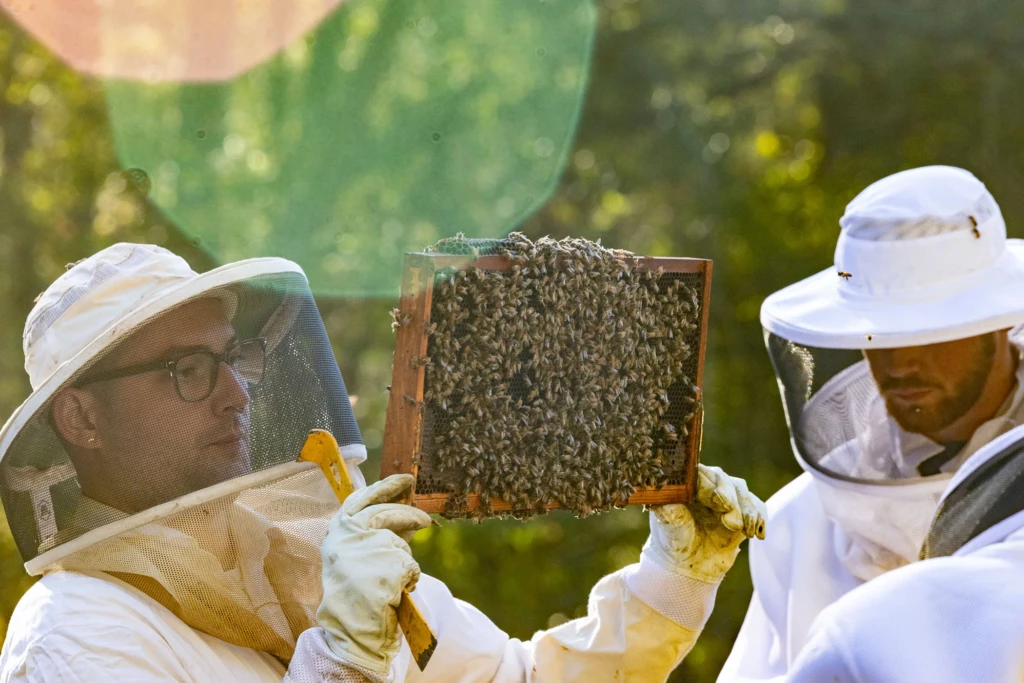
Worker bees secrete an enzyme called glucose oxidase into the nectar they collect. Once that nectar is stored in the hive and begins to thicken into honey, the enzyme triggers a reaction that produces hydrogen peroxide. The result is food that not only nourishes the colony but also protects it from bacteria, fungi and even larger pests like hive beetles.
“It’s a collective immune system,” said Bartlett, who is faculty in both the College of Agricultural and Environmental Sciences and the Odum School of Ecology. “No individual bee could do this alone, but together they create an environment that keeps pathogens in check.”
Protecting the most vulnerable
Producing hydrogen peroxide comes at a cost. Making glucose oxidase requires energy and protein — resources bees could use elsewhere. But the investment is worth it. Bartlett’s research shows that bees are strategic about when and where they add this chemical shield.
“They seem to know where it matters most,” he explained. “We see higher amounts deposited in brood food — the meals destined for larvae. Those young bees don’t yet have the protective microbiomes that adults carry, so they rely heavily on their sisters to safeguard them.”
By targeting their defenses, bees help ensure that the next generation has the best chance to survive.
Built for tolerance
What’s even more remarkable is just how much hydrogen peroxide bees can handle. Bartlett’s lab has tested their tolerance by feeding them sugar solutions with increasing doses of the chemical. The results were surprising.
“Bees can tolerate incredibly high concentrations of hydrogen peroxide in their food,” Bartlett said. “Far higher than what would be lethal to many other insects.”
Bartlett is trying to find out if this tolerance evolved because it is believed that plants themselves use hydrogen peroxide as a preservative in nectar. By adding it, flowers protect their sweet rewards from microbes that would otherwise cause rapid spoilage. For pollinators like honey bees, feeding on this treated nectar may have meant adapting to handle it. Over evolutionary time, pollinators could have taken that built-in tolerance and repurposed it into a colony-wide immune strategy.
Lessons from the hive
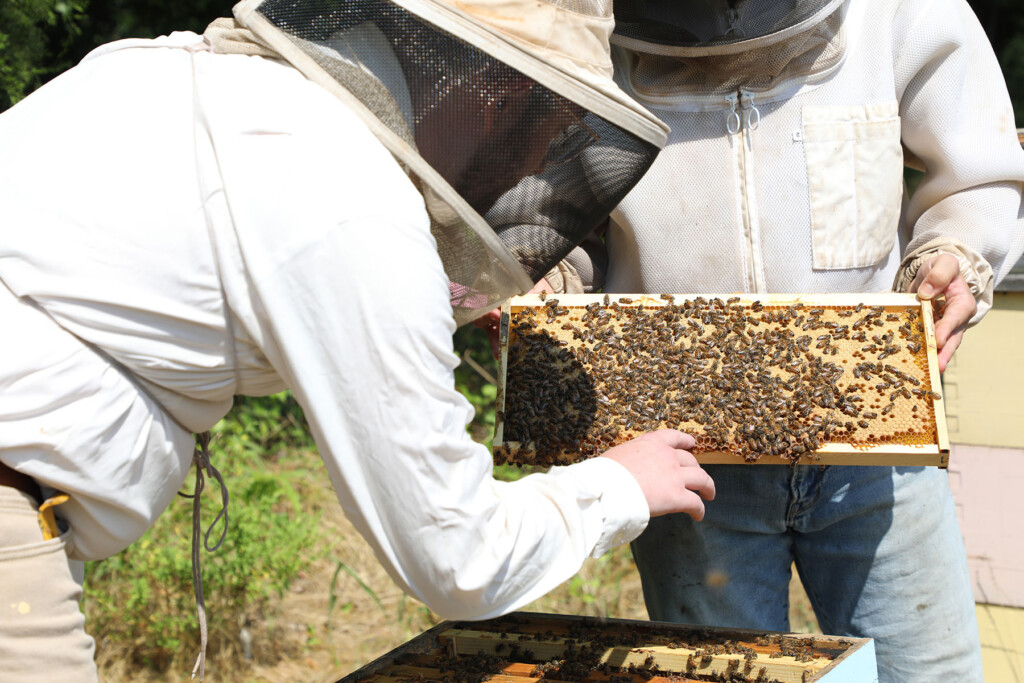
Understanding how bees manage disease pressure has real-world value. Beekeepers lose colonies every year to infections and parasites, and improved knowledge of natural defenses can lead to better management practices.
“We’re still piecing the story together,” Bartlett said. “But if we can learn how bees deploy hydrogen peroxide most effectively, it might help beekeepers support those defenses through nutrition or management choices.”
The research could also ripple beyond the apiary. Honey’s antimicrobial properties have long intrigued food scientists and medical researchers. By clarifying the mechanisms behind those properties, studies of bee biology may one day inspire new approaches to food safety, natural preservatives, or even human medicine.
Ingenuity in a crowded world
In some ways, the story of hydrogen peroxide in the hive is a reminder of just how ingenious bees are as social insects. Living in tight quarters brings risk, but it also fuels innovation. Bees don’t practice social distancing or isolation — yet they have evolved chemistry that helps the entire colony stay healthy.
“Bees don’t know how to socially distance,” Bartlett said. “But they’ve evolved other ways of keeping their society healthy. Hydrogen peroxide is just one of the ingenious tools they use to keep the hive alive.”
More than just honey
To the casual observer, honey bees may seem like simple foragers, flying from flower to flower in search of nectar. But Bartlett’s research highlights something deeper: a species that has learned to use its environment — and its own biology — to defend itself against threats.
In a world where pollinator health is increasingly under pressure, these lessons matter. By better understanding the chemistry of the hive, scientists can help ensure that honey bees continue their vital role in agriculture and ecosystems.
After all, Bartlett points out, the colony itself is more than the sum of its parts.
“Honey bees are a superorganism,” he said. “Each bee contributes a little, but together they create something powerful — an immune system that protects them all.”
Learn more about the UGA Bee Program at bees.caes.uga.edu.
